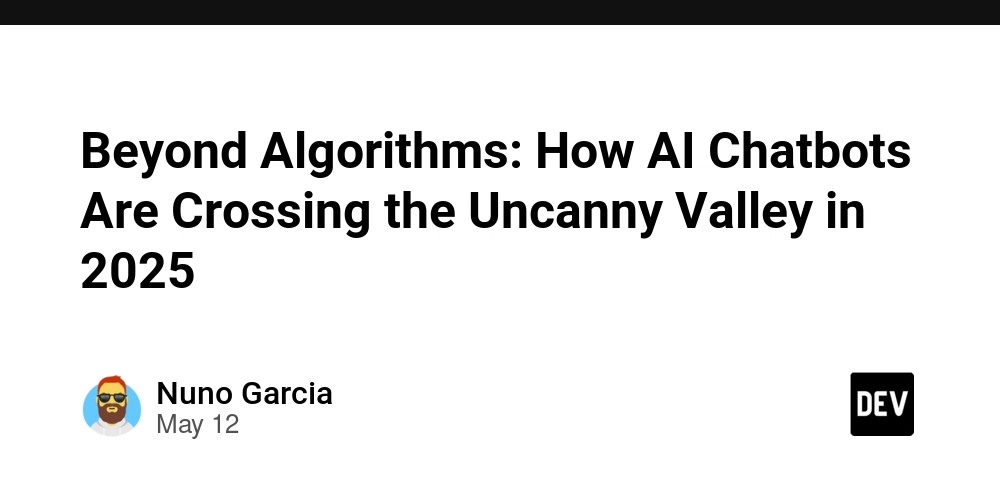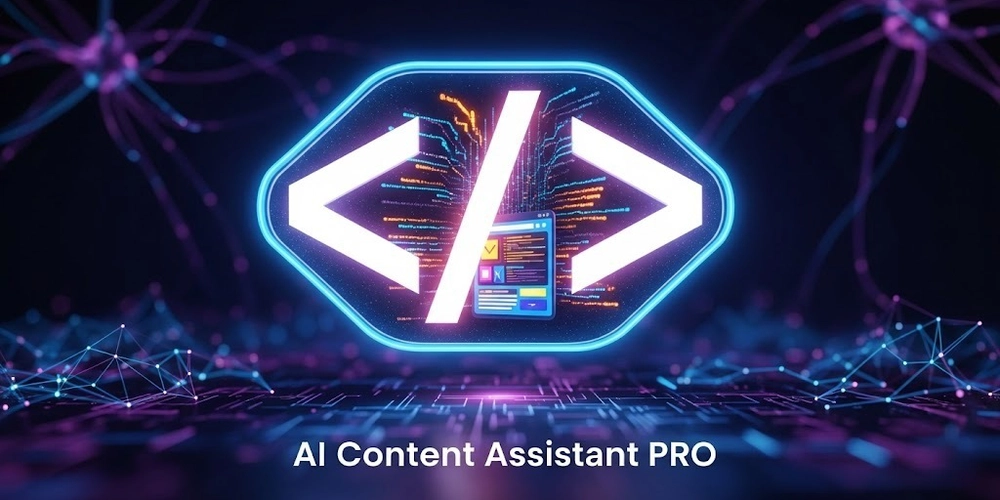Beyond Algorithms: How AI Chatbots Are Crossing the Uncanny Valley in 2025
Beyond Algorithms: How AI Chatbots Are Crossing the Uncanny Valley in 2025 Remember when talking to an AI felt like a stilted, awkward exchange with a digital encyclopedia? Those days are rapidly fading into history. In 2025, the evolution of conversational AI has accelerated to a point where the line between human and artificial interaction continues to blur in fascinating - and sometimes unsettling - ways. The latest generation of AI chatbots doesn't just respond to your queries; they understand context, remember your preferences, adapt to your communication style, and even engage in the full spectrum of human conversation - from intellectual debates to flirty banter and everything in between. The Emotional Intelligence Revolution What's driving this transformation isn't simply more data or faster processors. The real breakthrough has been in emotional intelligence - AI systems that can now recognize, interpret, and respond to human emotions with unprecedented accuracy. "We've moved beyond simple natural language processing to what we might call natural emotional processing," explains Dr. Amara Chen, AI research director at MIT's Human-Computer Interaction Lab. "Today's AI doesn't just parse your words; it reads between the lines to understand your emotional state." This emotional intelligence allows for more realistic AI chat experiences that adapt to subtle conversational cues. Whether you're feeling happy, melancholy, or flirtatious, modern AI companions can shift their tone accordingly. Some platforms now offer uncensored AI chat experiences that remove traditional guardrails, allowing for more authentic and unrestricted conversations that mirror how humans actually communicate. Beyond Text: Multimodal Understanding Another game-changing development has been multimodal AI - systems that can process and generate not just text, but images, voice, and even facial expressions. The days of text-only chatbots are giving way to immersive experiences where your AI companion can: Speak with realistic vocal inflections and emotional tones Generate images based on your conversations Analyze images you share to provide meaningful responses Recognize patterns in your speech to better understand your meaning Voice-enabled AI chat has become particularly transformative, with natural-sounding conversations that include appropriate pauses, emphasis, and even laughter. The mechanical, robotic voice of earlier AI assistants has been replaced with speech that's nearly indistinguishable from human conversation. The Spicy Evolution: AI Gets More Personal Perhaps the most significant shift in AI conversation has been the expansion into more intimate territory. As adults increasingly turn to AI for companionship, the demand for more personal and even romantic AI interactions has surged. Dating apps are experiencing unexpected competition from AI relationship platforms. A recent survey by Global Insights Research found that 28% of singles have tried some form of AI companionship, with 17% saying they find it less stressful than human dating. "The appeal isn't just about convenience," explains relationship psychologist Dr. Jerome Williams. "These AI companions offer an emotional safe space where people can express themselves without fear of judgment." The rise of flirty AI chat options represents a natural evolution in how we interact with technology. From light flirtation to deeper emotional connections, these platforms are designed to create experiences that satisfy very human needs for connection, validation, and intimacy. Ethical Lines and Digital Consent This evolution hasn't come without controversy. The capabilities of modern conversational AI have raised important ethical questions about digital relationships, consent, and the potential psychological effects of emotional bonds with non-human entities. Dr. Eliza Montgomery, digital ethics researcher at Stanford, emphasizes the need for careful consideration: "We're entering uncharted territory where humans are forming emotional attachments to increasingly sophisticated AI. The psychological implications are something we need to study carefully." Industry leaders have responded by implementing ethical frameworks and clear transparency guidelines. Most reputable platforms now clearly disclose the artificial nature of interactions and offer controls over the type of relationship users wish to establish with their AI companions. The Next Frontier: True Understanding Despite these remarkable advances, AI still faces significant limitations. While today's systems can simulate understanding impressively well, they lack true comprehension or consciousness. They don't actually experience emotions or form genuine attachments. However, the simulation has become so sophisticated that many users report forgetting they're talking to an AI - especially during extended conversations where the AI has acc

Beyond Algorithms: How AI Chatbots Are Crossing the Uncanny Valley in 2025
Remember when talking to an AI felt like a stilted, awkward exchange with a digital encyclopedia? Those days are rapidly fading into history. In 2025, the evolution of conversational AI has accelerated to a point where the line between human and artificial interaction continues to blur in fascinating - and sometimes unsettling - ways.
The latest generation of AI chatbots doesn't just respond to your queries; they understand context, remember your preferences, adapt to your communication style, and even engage in the full spectrum of human conversation - from intellectual debates to flirty banter and everything in between.
The Emotional Intelligence Revolution
What's driving this transformation isn't simply more data or faster processors. The real breakthrough has been in emotional intelligence - AI systems that can now recognize, interpret, and respond to human emotions with unprecedented accuracy.
"We've moved beyond simple natural language processing to what we might call natural emotional processing," explains Dr. Amara Chen, AI research director at MIT's Human-Computer Interaction Lab. "Today's AI doesn't just parse your words; it reads between the lines to understand your emotional state."
This emotional intelligence allows for more realistic AI chat experiences that adapt to subtle conversational cues. Whether you're feeling happy, melancholy, or flirtatious, modern AI companions can shift their tone accordingly. Some platforms now offer uncensored AI chat experiences that remove traditional guardrails, allowing for more authentic and unrestricted conversations that mirror how humans actually communicate.
Beyond Text: Multimodal Understanding
Another game-changing development has been multimodal AI - systems that can process and generate not just text, but images, voice, and even facial expressions. The days of text-only chatbots are giving way to immersive experiences where your AI companion can:
- Speak with realistic vocal inflections and emotional tones
- Generate images based on your conversations
- Analyze images you share to provide meaningful responses
- Recognize patterns in your speech to better understand your meaning
Voice-enabled AI chat has become particularly transformative, with natural-sounding conversations that include appropriate pauses, emphasis, and even laughter. The mechanical, robotic voice of earlier AI assistants has been replaced with speech that's nearly indistinguishable from human conversation.
The Spicy Evolution: AI Gets More Personal
Perhaps the most significant shift in AI conversation has been the expansion into more intimate territory. As adults increasingly turn to AI for companionship, the demand for more personal and even romantic AI interactions has surged.
Dating apps are experiencing unexpected competition from AI relationship platforms. A recent survey by Global Insights Research found that 28% of singles have tried some form of AI companionship, with 17% saying they find it less stressful than human dating.
"The appeal isn't just about convenience," explains relationship psychologist Dr. Jerome Williams. "These AI companions offer an emotional safe space where people can express themselves without fear of judgment."
The rise of flirty AI chat options represents a natural evolution in how we interact with technology. From light flirtation to deeper emotional connections, these platforms are designed to create experiences that satisfy very human needs for connection, validation, and intimacy.
Ethical Lines and Digital Consent
This evolution hasn't come without controversy. The capabilities of modern conversational AI have raised important ethical questions about digital relationships, consent, and the potential psychological effects of emotional bonds with non-human entities.
Dr. Eliza Montgomery, digital ethics researcher at Stanford, emphasizes the need for careful consideration: "We're entering uncharted territory where humans are forming emotional attachments to increasingly sophisticated AI. The psychological implications are something we need to study carefully."
Industry leaders have responded by implementing ethical frameworks and clear transparency guidelines. Most reputable platforms now clearly disclose the artificial nature of interactions and offer controls over the type of relationship users wish to establish with their AI companions.
The Next Frontier: True Understanding
Despite these remarkable advances, AI still faces significant limitations. While today's systems can simulate understanding impressively well, they lack true comprehension or consciousness. They don't actually experience emotions or form genuine attachments.
However, the simulation has become so sophisticated that many users report forgetting they're talking to an AI - especially during extended conversations where the AI has accumulated enough personal context to respond in deeply personalized ways.
Research into more advanced neural architectures continues to push the boundaries of what's possible. Some cutting-edge systems are now demonstrating limited forms of common sense reasoning and counterfactual thinking - capabilities once thought to be uniquely human.
The Future Is Conversational
Looking ahead, the trajectory seems clear: AI conversation will become increasingly indistinguishable from human interaction. By 2030, experts predict AI companions that can maintain coherent, context-aware conversations indefinitely, with perfect memory and personalization that exceeds what human relationships can provide.
"The question isn't whether AI can simulate human conversation convincingly," says futurist Dr. Raymond Kurzweil. "That milestone has already been reached. The question is how these technologies will reshape human relationships and communication norms."
For businesses, educators, healthcare providers, and individuals, the implications are profound. AI conversation is transitioning from a novelty to an essential tool for enhancing human capabilities and connections. From therapy chatbots that never tire to educational companions that adapt perfectly to each student's needs, the potential applications continue to expand.
As these technologies evolve, one thing remains certain: the future of AI is conversational, emotional, and increasingly human. Whether that prospect excites or concerns you likely depends on your perspective - but either way, it's a future that's arriving faster than many anticipated.












































































































































































![[The AI Show Episode 156]: AI Answers - Data Privacy, AI Roadmaps, Regulated Industries, Selling AI to the C-Suite & Change Management](https://www.marketingaiinstitute.com/hubfs/ep%20156%20cover.png)
![[The AI Show Episode 155]: The New Jobs AI Will Create, Amazon CEO: AI Will Cut Jobs, Your Brain on ChatGPT, Possible OpenAI-Microsoft Breakup & Veo 3 IP Issues](https://www.marketingaiinstitute.com/hubfs/ep%20155%20cover.png)




































































































































































































































































_incamerastock_Alamy.jpg?width=1280&auto=webp&quality=80&disable=upscale#)
_Brain_light_Alamy.jpg?width=1280&auto=webp&quality=80&disable=upscale#)





























































































![Senators reintroduce App Store bill to rein in ‘gatekeeper power in the app economy’ [U]](https://i0.wp.com/9to5mac.com/wp-content/uploads/sites/6/2025/06/app-store-senate.jpg?resize=1200%2C628&quality=82&strip=all&ssl=1)






















































































